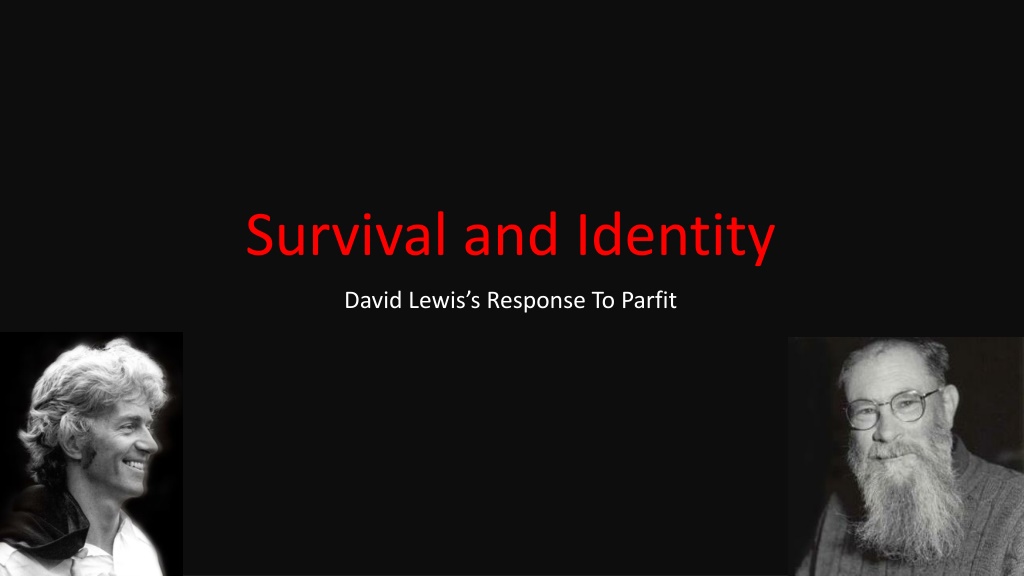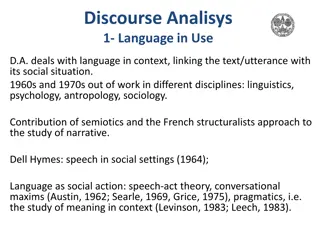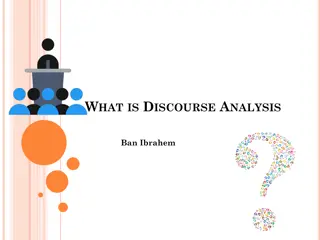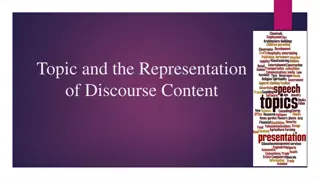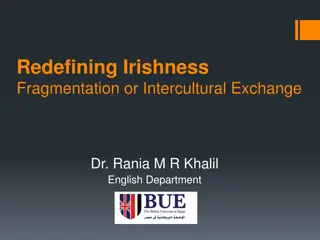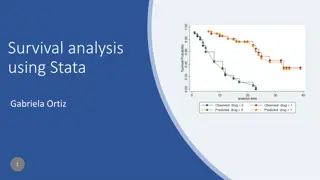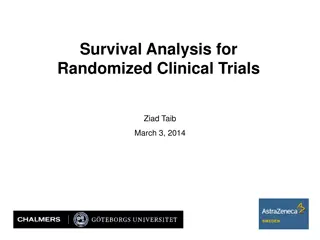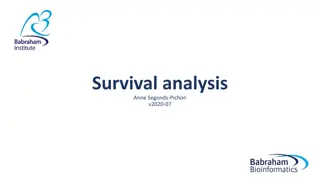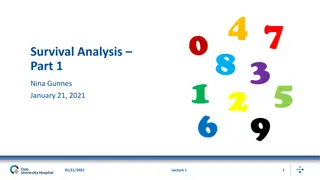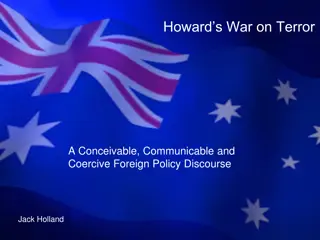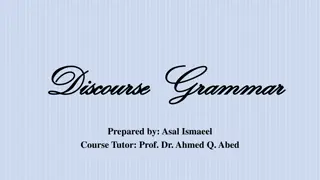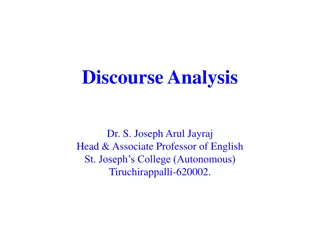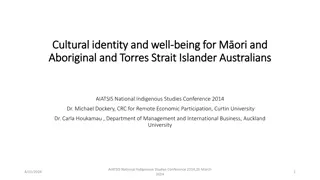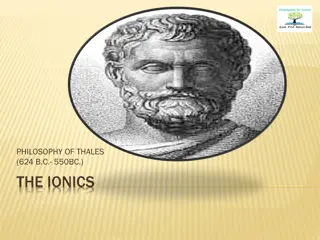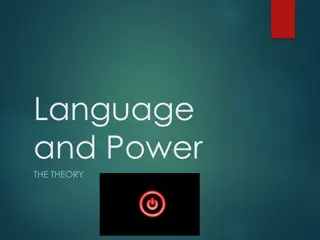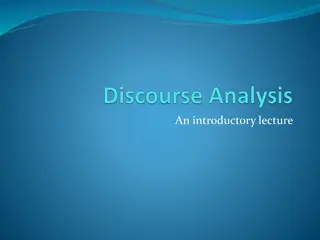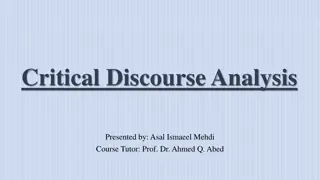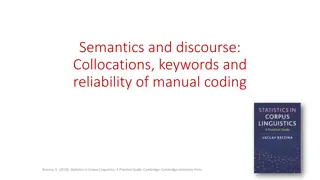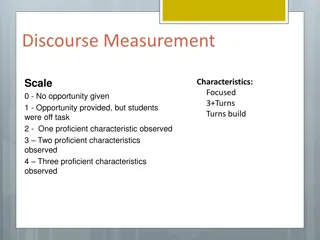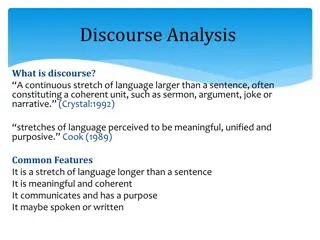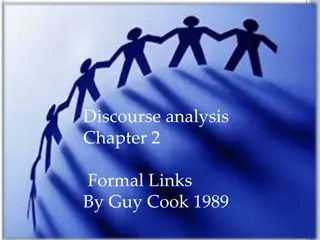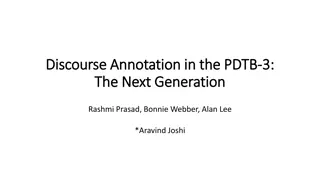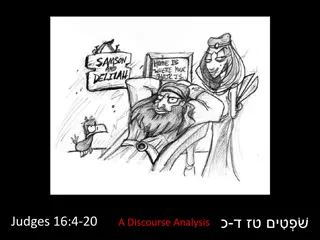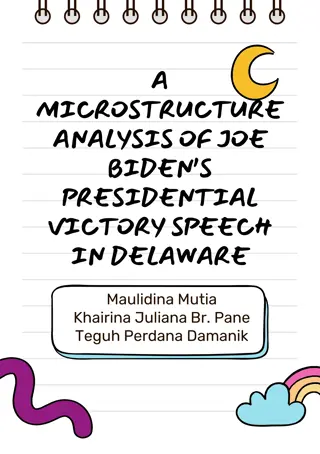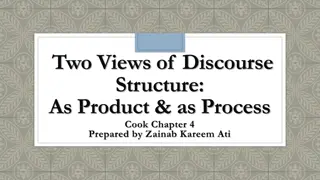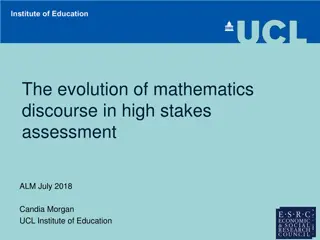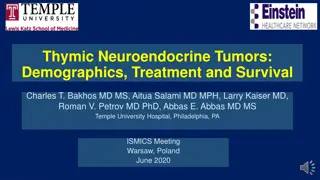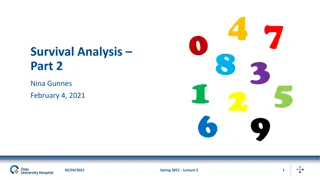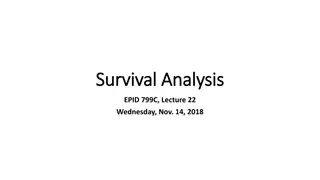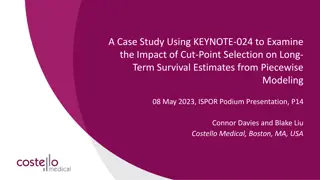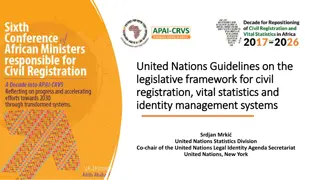Perspectives on Survival and Identity in Philosophical Discourse
David Lewis defends Neo-Lockeanism by emphasizing the significance of mental continuity and connectedness for personal survival. He contrasts psychological criteria with identity and explores the formal character differences between these concepts. The discussion delves into the relevance of relationships in defining personal identity and survival, drawing parallels with spatial unity in the context of an elephant's body parts.
Download Presentation

Please find below an Image/Link to download the presentation.
The content on the website is provided AS IS for your information and personal use only. It may not be sold, licensed, or shared on other websites without obtaining consent from the author. Download presentation by click this link. If you encounter any issues during the download, it is possible that the publisher has removed the file from their server.
E N D
Presentation Transcript
Survival and Identity David Lewis s Response To Parfit
Lewis Defends Neo-Lockeanism What matters for survival is mental continuity and connectedness These are relations between total psychological states that occur at stages that exist at different times such that: oChange (difference in states) is gradual rather than sudden oChanges are a result of the lawful causal dependence of one state on another Mental continuity and connectness are relations between (momentary) stages that are temporal parts of persons; personal identity is a relation between the extended 4-dimensional worms of which they are parts.
One Persons Modus Ponens is anothers Modus Tollens If a job is worth doing, it s worth doing well. Modus Ponens Modus Tollens
Neo-Lockeanism: Pro and Con Arguments Parfit: For Neo-Lockeanism Against Neo-Lockeanism 1. If our criterion for personal identity is psychological then identity isn t what matters for survival. 1. If our criterion for personal identity is psychological then identity isn t what matters for survival. 2. Our criterion for personal identity is psychological. 2. Identity is what matters for survival. 3. Therefore, our criterion for personal identity is not psychological 3. Therefore, identity is not what matters for survival.
Identity and R-Relatedness We have a discrepancy of formal character between identity and any suitable relation of mental continuity and connectedness. He who says that what matters in survival is a relation of mental continuity and connectedness is speaking of a relation among more or less momentary person- stages, or time-slices of continuant persons, or persons-at-times. He who says that what matters in survival is identity [is] speaking of identity among temporally extended continuant persons with stages at different times. It is pointless to compare the formal character of identity with the formal character of the relation that matters in survival.
The Relation Between Tail and Trunk Is not identity but The spatial unity relation for elephant oSpatio-temporal continuity oCausal connectedness in one organized system
The R-Relation and the I-Relation R-Relation: the psychological relation on person-stages that matters in survival. I-Relation: the relation that holds between the several stages of a continuant person. Continuant Person: a maximal I-interrelated aggregate of person-stages oEach stage of which is I-related to every other stage of the person and oThe person is not part of any larger I-interrelated aggregate Claim: Something is a continuant person iff it is a maximal R-related aggregate, i.e. the I-relation is the R-relation: that is to say, identity is what matters.
So why distinguish them in the first place? Because we went to put the question of whether the R-relation can be criterial for personal identity Comparing the R-relation with identity won t work because personal identity doesn t hold on person-stages. The I-relation by definition holds on stages of the same person since it s defined as the relation that holds on a pair of stages if and only if they re temporal parts of the same person So the question of whether holding psychological connectedness/continuity is what matters is compatible with holding that identity is what matters is the question of whether the R-relation is the I-relation.
The I-Relation may be one-many It would be wrong to read my definition of the I relation as saying that person stages S1 and S2 are I related if and only if the continuant person of whom S1 is a stage and the continuant person of whom S2 is a stage are identical. The definite articles require the presupposition that I have just questioned. We should substitute the indefinite article: S1 and S2 are I related if and only if a continuant person of whom S1 is a stage and a continuant person of whom S2 is a stage are identical. (p.61) More simply: if and only if there is some one continuant person of whom both S1 and S2 are stages. The implies uniqueness would preclude fission and fusion where the same stage belongs to more than one person--cases Lewis needs to deal with!
Fission and Fusion When mental continuity is not one-to-one
Fission RRRRRRRR A stage may be R-related to stages that are not R-related to one-another Given such branching cases, the R-relation is not transitive!
Identity and I-relatedness If the R-relation is the I-relation then the I-relation can t be transitive either But identity is transitive No problem: person-stages S1 and S2 are I-related iff a continuant person of whom S1 is a part is a stage of a continuant person of whom S2 is a state are identical.
The I-relation is not transitive S3 S2 S1 S1 is I-related to S2 because there s a person of which both are stages and S1 is I-related to S3 for the same reason But there s no person of which S2 and S3 are stages so S2 and S3 aren t I-related to one another!
Synchronic Counting Counting how many people are around at a given time In fission cases continuant persons overlap (like some roads!) so before fission there will be two continuant persons sharing a stage and From the timeless perspective, in a fission case, two people all along! Lewis solution: synchronic counting is not by identity but by tensed identity , a derivative relation among continuants induced by identity among stages Tensed Identity: C1 and C2 are identical-at-a-time-t iff they both exist at t and their stages at t are identical.
Different People Identical-at-t t S3 S2 S1 t Jones There are two people at all times They are identical-at-t--and neither they nor anyone else can tell them apart at t! The name Jones is ambiguous
Tensed Identity Is this ok? Some hold (controversially) that identity is the counting relation Lewis: A counting relation has at least to be an equivalence relation: reflexive, symmetrical, and transitive--and tensed identity is. Lewis: A counting relation must be an indiscernibility relation for at least some significant class of properties oIdentity-at-t is an indiscernibility relation for those properties of a person determined by his stage at t
What, at t,will be true about Jones? Brown-Jones cleans out the bank account and flies to Italy. Spends rest of life living well in Florence Retirement savings gone, Smith-Jones retires to Chula Vista S3 S2 S1 Jones Jones will live in Chula Vista or Jones will live in Florence? Both--since Jones is ambiguous. Jones will life in Chula Vista and Florence will not be true!
Longevity When mental connectedness fades away
Is survival a matter of degree? The complex fission-fusion case considered by Parfit suggests that psychological continuity may be a matter of degree. Lewis suggests that in the Methusalah case psychological continuity may be a matter of degree also. {{ { { time
Methusalah (not to scale) {{ { { time Consider Methuselah. At the age of 100 he still remembers his childhood. But new memories crowed out the old. At the age of 150 he has hardly any memories that go back before his twentieth year. At the age of 200 he has hardly any memories that go back before his seventieth year When he dies at the age of 969 he has hardly any memories that go beyond his 839th year.
More Overlap than in Fission Cases Any two stages of Methusalah separated by no more than 137 years are R-related Any two stages separated by 137 years or more are not R-related. Segments of Methuselah are R-interrelated iff no more than 137 years apart. Since the R-relation and I-relation are the same, all and only segments exactly 137 years long are maximal I-interrelated aggregates, i.e. continuant persons. There are infinitely many overlapping persons! Lewis: Tensed identity to the rescue once more
Degree Personal identity is a matter of degree because personhood is
Survival a Matter of Degree In Parfit s case of fusion the persons involved (considered as 4-dimensional worms remember) have less personhood than in ordinary cases. R-relatedness is some unspecified combination of not transitive and continuity so may fade away (continuity not sufficient!) Compare to ordinary case of diminished personhood involving deficient stages . If we say that a continuant person is an aggregate of R-interrelated person- stages, it is clear that personhood admits of degree . [Could this be a reason not to say a continuant person is an aggregate of stages?]
Degrees of Personhood Delineation of boundary: stringency requirement for 2 stages being R-related is set. Determines both which aggregates are R-related and which are maximal oDegree of personhood is a function of degree of R-relatedness and degree of maximality oThere s a trade-off between R-relatedness and maximality: the more stringent the delineation the fewer stages get in so those how do have higher maximality but lower degree of R-relatedness relative to standard. Wherever we set the boundary any 2 stages have same degree of personhood!
Degrees of R-Relatedness and Maximality D1: More Stringent Delineation D2: Less Stringent Deliniation Person under D2 Person under D1 Person is R-interrelated to a low degree (relative to D1 requirement) but maximal to a high degree Person is R-interrelated to a high degree (relative to D2 requirement) but maximal to a low degree Moral: It s a wash! Person has personhood to the same degree under either regime!
Perrys Treatment of Fission And then there were three
Postscript Two Minds With But a Single Thought
A Case of Semi-Failed Teletransportation Martha Problem:Eartha s pre-fission desire, in virtue of stage e s desiring, to get to Mars is not satisfied since she, a 4-d worm, does not include a stage on Mars. post-fission stage m on Mars Eartha Lewis Response: There is a limit to how commonsensical one s desires can possibly be under the peculiar circumstances of stage-sharing. pre-fission stage e on Earth Comment: maybe the problem is understanding people as 4-d worms Cohabitants Branch Line Case
In Defense of Stages Lewis defends the four-dimensionalist ontology of instantaneous stages
Worms or Stages? worm A stage is a temporal slice of a worm stage stages Assuming 4-dimensionalism, there is a further question: are ordinary objects, including people, 4-d worms that have instantaneous stages as their temporal parts or are they themselves instantaneous stages?
